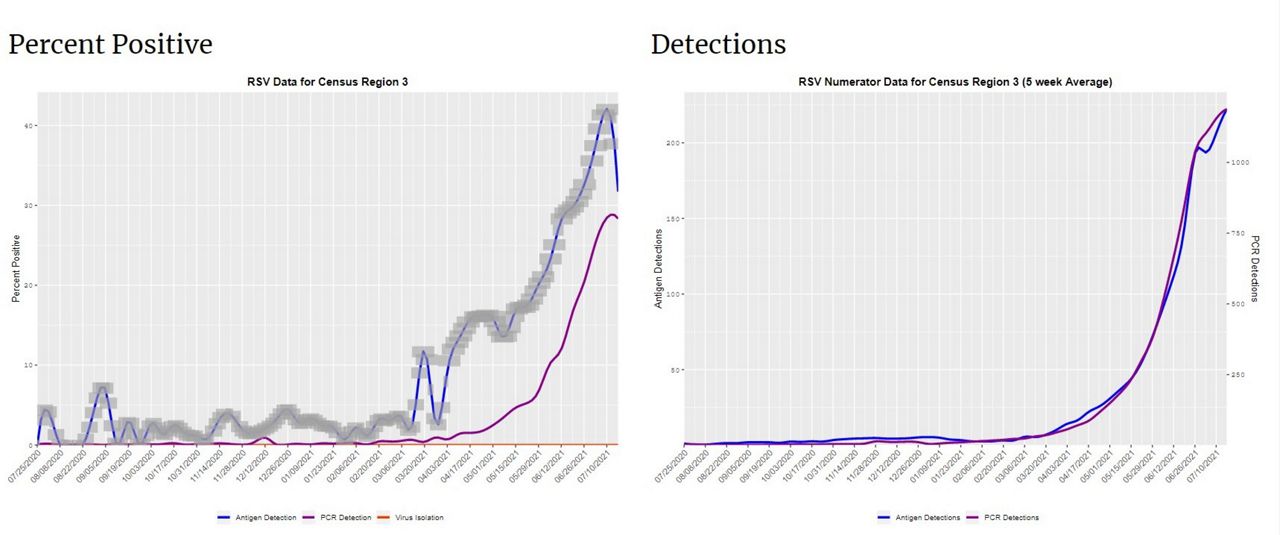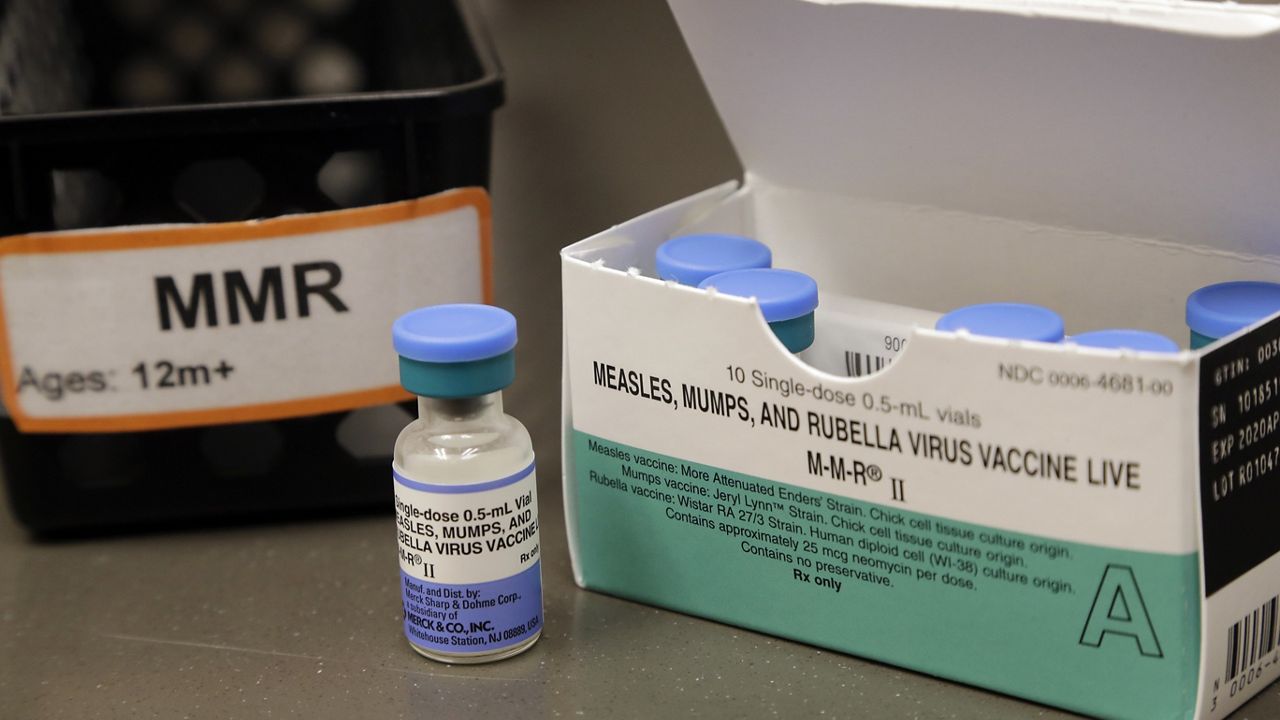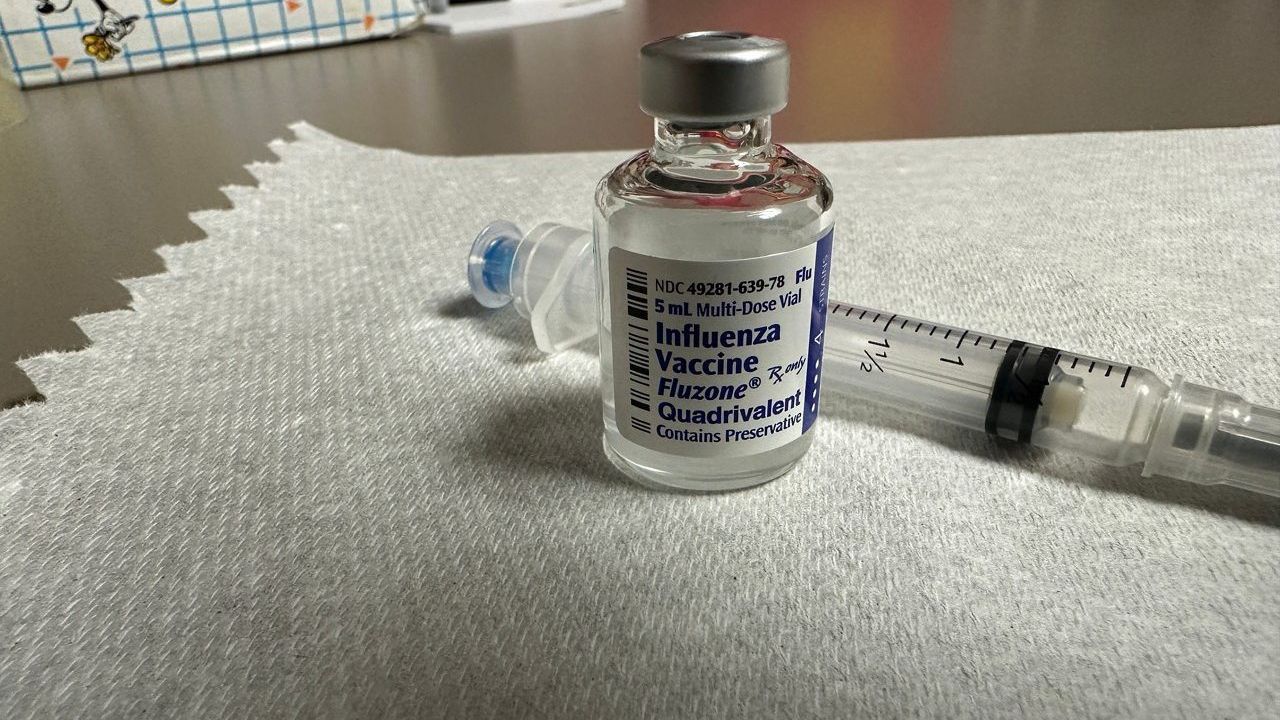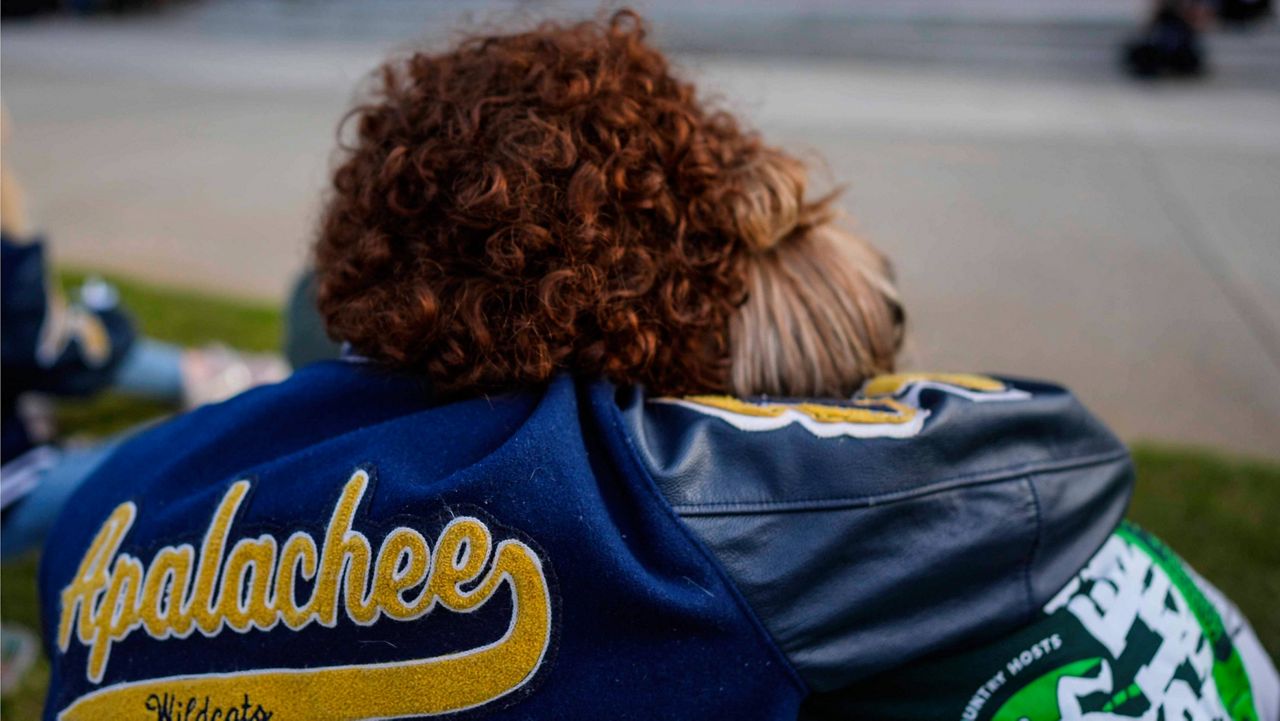AUSTIN, Texas — RSV is known as a wintertime virus, but doctors are seeing an increase in cases this summer. The CDC issued a health advisory regarding the increase in RSV cases across the south, Texas being one of the states.

A Texas mom is speaking up after her son was sent to the hospital.
“Very quickly, he started to turn blue,” Casey Willis said about her 2-year-old son Colt. “We, of course, sped as quickly as possible and went to the nearest emergency room.”
Colt was diagnosed with RSV and croup.
According to the CDC, Respiratory Syncytial Virus is a common respiratory virus that usually causes mild, cold-like symptoms — but that’s not always the case in infants. The virus is usually dominant in the winter months, but Casey, being a nurse, had seen a recent rise in cases.
“I pretty much suspected that that’s what it was,” Willis said.
“We really don't know why RSV is here this summer,” Dr. Bradley Berg, the section Chief of Pediatrics for the Greater Austin Region for Baylor Scott and White said. “RSV is traditionally a wintertime virus.”
He said while there’s not an obvious reason for the rise in cases during this summer, it could be due to lessened COVID-19 restrictions, such as no longer wearing masks.
“We are seeing a very large increase, and our biggest respiratory diagnoses at this time of year has been RSV for the last few weeks,” Dr. Berg said.
Just like in Colt’s case, Dr. Berg said hospitalizations can occur quickly after catching RSV.
“Just 45 minutes before he was in respiratory distress, we were at home, he was outside playing,” Willis said. "His color was pink, he was perfectly fine. No fever and then by the time we got to the ER, it was respiratory distress, high fever. So he turned very fast.”
According to the CDC, people infected with RSV usually show symptoms within 4 to 6 days after getting infected. Symptoms of RSV infection usually include:
- Runny nose
- Decrease in appetite
- Coughing
- Sneezing
- Fever
- Wheezing











